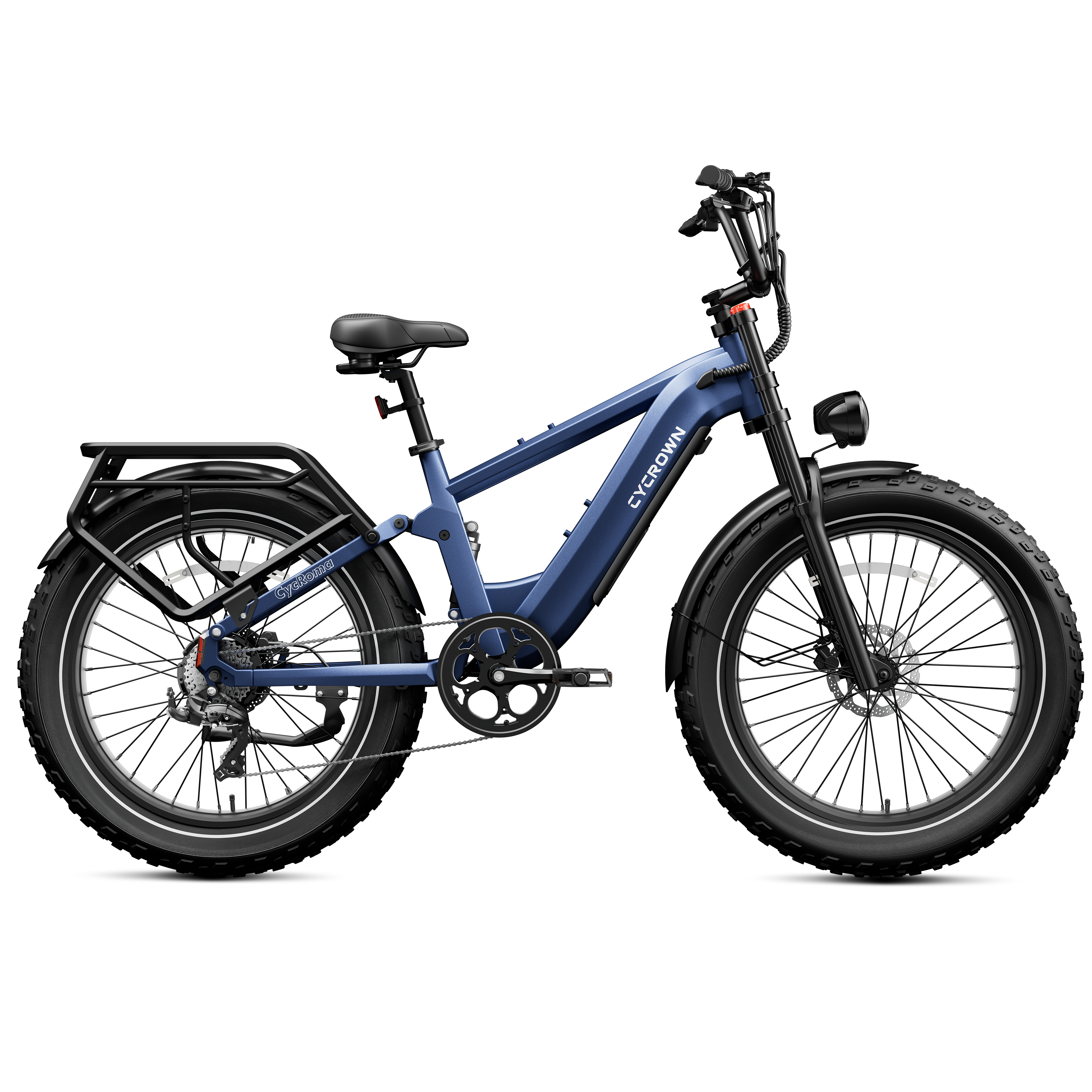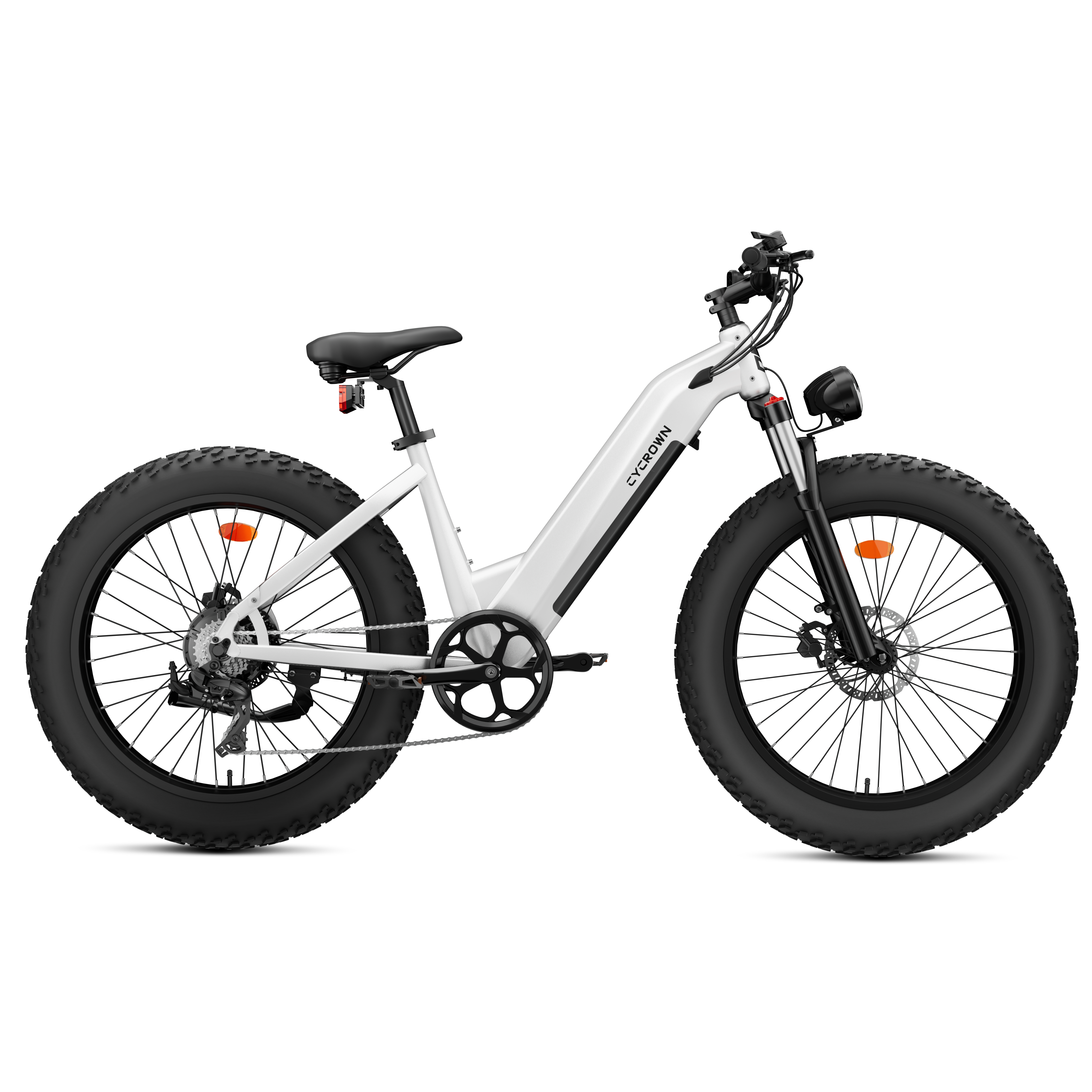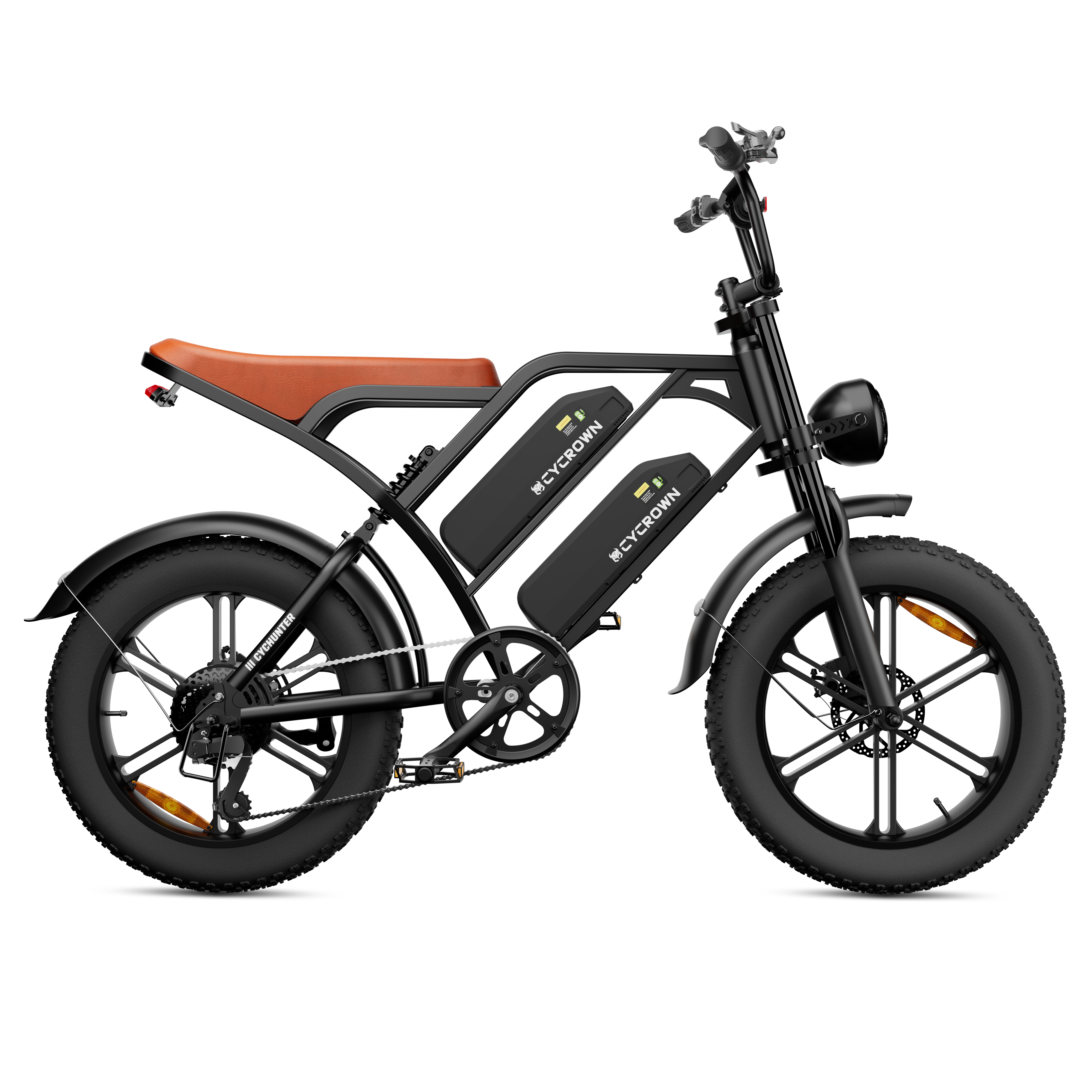Electric bikes, also known as e-bikes, are gaining popularity for their convenience and eco-friendliness. But what is a Class 2 electric bike, and how do the various classifications differ? To select the best e-bike for your requirements, you must first grasp the differences between Class 1, Class 2, and Class 3 e-bikes, each of which has various features and benefits.
In this article, we'll be focusing on Class 2 electric bikes and providing you with a comprehensive guide to everything you need to know about them. We'll cover the definition of Class 2 e-bikes, their features and benefits, and the various factors to consider when choosing one.
By the end of this article, you'll have a clear understanding of what a Class 2 electric bike is and whether it's the right choice for you.
What is a Class 2 Electric Bike?

If you're in the market for an electric bike, you might have heard the term "Class 2" thrown around. But what exactly is a Class 2 electric bike?
A Class 2 electric bike, also known as a throttle-assisted electric bicycle, is a category of e-bike that provides power through a throttle mechanism, allowing the rider to propel the bike without pedaling. This type of e-bike typically features a motor with a power output of up to 750 watts and is designed to assist the rider up to a maximum speed of 20 miles per hour.
Class 2 vs. Class 1 and Class 3 E-Bikes
First, let's compare Class 2 electric bikes to the other two classes of e-bikes. Class 1 e-bikes are pedal-assist only, meaning the motor only assists when you pedal. Class 3 e-bikes are also pedal-assist, but they have a higher maximum speed and are subject to more regulations.
Class 2 e-bikes, on the other hand, have both pedal-assist and throttle control options. This means you can either pedal and have the motor assist you, or you can use the throttle to control the bike's speed without pedaling.
Characteristics of a Class 2 Electric Bike
One of the unique characteristics of a Class 2 electric bike is the throttle control feature. This allows you to control the bike's speed without pedaling, making it a great option for those who want to take a break from pedaling or need a little extra help getting up hills.
Another benefit of Class 2 e-bikes is that they are not subject to the same regulations as Class 3 e-bikes. This means you can ride them on more trails and in more areas without worrying about breaking the law.
Features of Class 2 Electric Bikes

Class 2 electric bikes are equipped with a throttle control that allows you to propel the bike using the motor exclusively, without the need for pedaling. This feature sets them apart from Class 1 bikes, which only provide motor assistance while you're pedaling, and don't include a throttle. The throttle control is usually located on the handlebars and can be used to control the speed of the bike.
1. Throttle Control
The throttle control is a key feature of Class 2 electric bikes. It enables you to control the speed of the bike without pedaling. This is different from Class 1 bikes, which only provide motor assistance when you're pedaling.
With a Class 2 e-bike, you can use the throttle to accelerate quickly and maintain a constant speed. This makes it easier to keep up with traffic and navigate through crowded areas. However, it's important to note that some states and countries have restrictions on the use of throttles, so be sure to check local laws before using one.
2. Speed Limitations
Class 2 electric bikes have a speed limit of 20 mph. This means that the motor will stop assisting once you reach this speed. It's important to note that this limit is not a recommendation, but a legal requirement in many states and countries.
Exceeding this limit can result in fines and other penalties. It's also worth noting that some Class 2 e-bikes have a speed limit that is lower than 20 mph, so be sure to check the specifications of your bike before riding.
3. Motor Power
The motor power of a Class 2 electric bike can vary depending on the manufacturer and model. Generally, motors range from 250 watts to 750 watts. The higher the wattage, the more powerful the motor and the faster the bike can go.
However, it's important to note that higher-wattage motors can drain the battery faster, so you may need to recharge more frequently. The motor power also affects the bike's ability to climb hills and carry heavier loads. If you plan on using your e-bike for commuting or hauling cargo, you may want to consider a higher-wattage motor.
Benefits of Class 2 Electric Bikes

Class 2 electric bikes offer several benefits to riders.
Here are some of the advantages of using a Class 2 e-bike:
1. Versatility
One of the significant benefits of Class 2 electric bikes is their versatility. They come with both throttle control and pedal-assist, which makes them suitable for various riding conditions. You can use the throttle control to propel the bike without pedaling, which is useful when you need to conserve energy or rest your legs.
On the other hand, you can use the pedal-assist mode to get some exercise and reduce your reliance on the motor. This versatility makes Class 2 e-bikes an excellent choice for commuters, recreational riders, and anyone who wants to enjoy the benefits of both worlds.
2. Accessibility
Another benefit of Class 2 electric bikes is their accessibility. The throttle control allows riders with mobility issues or those who prefer easier starts to ride the bike comfortably.
You can use the throttle to start the bike and get it moving without having to pedal. This feature is particularly useful for older riders, people with disabilities, or anyone who wants to minimize the physical effort required to ride the bike.
3. Safety
Class 2 electric bikes are designed with safety in mind. They come with a limited top speed of 20 mph, which is lower than Class 3 e-bikes. This speed limit ensures that the bike remains within the legal limit for e-bikes in most states and countries.
Additionally, the controlled acceleration of Class 2 e-bikes ensures that the rider can maintain better control of the bike and avoid accidents. These safety features make Class 2 e-bikes an excellent choice for riders who want to enjoy the benefits of e-bikes without compromising their safety.
Legal Considerations for Class 2 Electric Bikes
When it comes to Class 2 electric bikes, there are some legal considerations that you should be aware of. These bikes are classified as low-speed electric bicycles and are subject to specific regulations depending on the region you are in.
Here are some of the legal restrictions and permissions for Class 2 e-bikes in different regions:
-
In the United States, Class 2 e-bikes are allowed on roads and bike lanes, but they are not allowed on sidewalks. The maximum speed limit for Class 2 e-bikes is 20 mph, and the motor should not exceed 750W. Some states may have additional regulations, so it is important to check the local laws before riding your Class 2 e-bike.
-
In Europe, Class 2 e-bikes are classified as Pedelecs and are allowed on bike paths and roads. The maximum speed limit for Class 2 e-bikes is 15.5 mph, and the motor should not exceed 250W. Some countries may have different regulations, so it is important to check the local laws before riding your Class 2 e-bike.
-
In Canada, Class 2 e-bikes are allowed on roads and bike lanes, but they are not allowed on sidewalks. The maximum speed limit for Class 2 e-bikes is 20 mph, and the motor should not exceed 500W. Some provinces may have additional regulations, so it is important to check the local laws before riding your Class 2 e-bike.
These regulations might affect where and how Class 2 e-bikes can be used. For instance, if you live in a region where Class 2 e-bikes are not allowed on sidewalks, you may need to ride on the road or bike lanes. It is also important to note that some regions may require riders to wear helmets or have certain safety features on their Class 2 e-bikes.
Read more about: Electric Bike Rules 2024: Laws and Regulations for E-Bikers
Common Uses for Class 2 E-Bikes

Class 2 electric bikes are versatile and can be used for a variety of purposes.
Here are some of the most common uses for Class 2 e-bikes:
- commuting
- leisure riding
- utility purposes
1. Commuting
One of the most popular uses for Class 2 e-bikes is commuting. With the combination of throttle and pedal-assist, you can easily navigate through traffic and reach your destination quickly. The ability to switch between pedal-assist and throttle modes also gives you more control over your speed and allows you to conserve battery life.
2. Leisure Riding
Class 2 e-bikes are also great for leisure riding. Whether you're exploring a new trail or cruising through the city, the throttle and pedal-assist features make it easy to enjoy the ride. You can switch between modes to match your level of exertion and take in the sights without breaking a sweat.
3. Utility Purposes
Another common use for Class 2 e-bikes is utility purposes. With the ability to carry cargo and navigate through tight spaces, these bikes are perfect for running errands or making deliveries. The throttle and pedal-assist features also make it easy to transport heavy loads without putting too much strain on your body.
Choosing the Right Class 2 Electric Bike
When selecting a Class 2 e-bike, it is essential to consider your specific needs, such as range, power, and intended use.
Here are some tips to help you choose the right Class 2 e-bike for you:
-
Range: Consider the distance you plan to travel on your e-bike. Choose a bike with a battery that can cover that distance on a single charge. Look for e-bikes with batteries lasting 100+ miles, like the ones offered by Cycrown.
-
Power: Choose an e-bike with a motor that can meet your needs. Class 2 e-bikes are limited to 750W to comply with e-bike laws, but the torque (Nm) is not regulated and can significantly increase acceleration and power.
-
Intended Use: Consider where you plan to ride your e-bike. If you plan to ride on streets, bike lanes, and multiple-use bike paths, a Class 2 e-bike is a good choice. If you plan to ride off-road, consider a Class 1 e-bike with pedal-assist only.
Popular Class 2 E-Bike Models
Cycrown is a well-known brand that offers quality Class 2 e-bikes. Their top model, the CycKnight Folding Electric Bike, is a compact and convenient e-bike with powerful performance. It is perfect for urban e-biking and can transform your commute while saving space.
Conclusion
In summary, Class 2 electric bikes are a great option for those seeking a balance of pedal assistance and throttle assistance up to 20mph. They are perfect for people who want an easy and speedy transportation option without the hassles of vehicle registration and extra taxes.
Compared to Class 1 e-bikes, Class 2 e-bikes have an additional throttle assist feature that allows you to ride without pedaling. This makes them ideal for cyclists with limited mobility or those who are recovering from injury.
When it comes to Class 3 e-bikes, they have a higher speed limit of up to 28mph, but may or may not have throttle assistance. Class 4 e-bikes may have a top speed of over 28mph and motor wattage over 750W, but are not legal in all areas.
Overall, Class 2 e-bikes strike a balance between convenience and exercise. They are a great option for commuting, running errands, or leisurely rides. With their affordability, ease of use, and eco-friendliness, Class 2 e-bikes are definitely worth considering if you're in the market for an electric bike.
Recommended Article:
Frequently Asked Questions
What is the difference between a class 1 and class 2 ebike?
Class 1 and Class 2 ebikes are both pedal-assist electric bicycles. The main difference between the two is that Class 2 ebikes also have a throttle, which allows you to ride the bike without pedaling. Class 1 ebikes, on the other hand, only provide assistance when you are pedaling.
How many watts is a class 2 ebike?
The wattage of a Class 2 ebike can vary depending on the specific model. However, by law, a Class 2 ebike must have a motor that is 750 watts or less.
Which class of ebike is the best?
The best class of ebike for you depends on your individual needs and preferences. If you want a bike that provides assistance when you pedal but also has a throttle for times when you don't want to pedal, then a Class 2 ebike might be best for you. If you prefer a bike that only provides assistance when you pedal, then a Class 1 ebike might be a better fit.
How fast can a class 2 ebike go?
By law, a Class 2 ebike can have a top speed of 20 miles per hour when using the throttle. However, the speed can vary depending on factors such as the terrain, the weight of the rider, and the level of assistance provided by the motor.
Can a class 2 ebike be changed to class 1?
It is possible to convert a Class 2 ebike to a Class 1 ebike by removing the throttle. However, it is important to note that once a bike has been converted, it can no longer legally be used as a Class 2 ebike. It is also important to make sure that the bike is still compliant with all other Class 1 regulations after the conversion.










